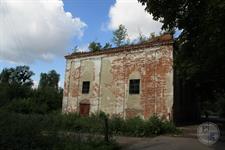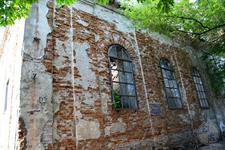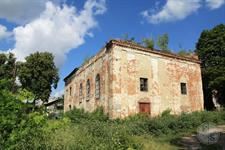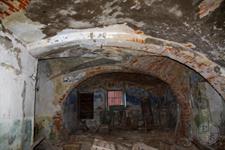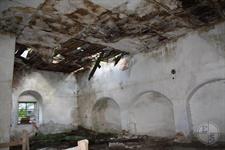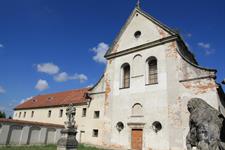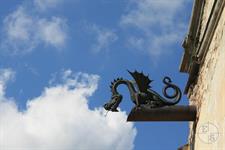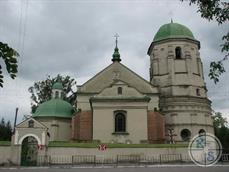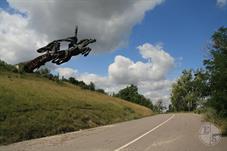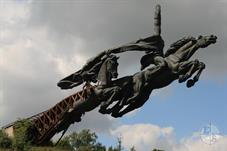Olesko
Zolochiv district, Lviv region
Sources:
- Russian Jewish encyclopedia
- Jewish encyclopedia of Brockhaus & Efron
Photo:
- Eugene Shnaider
- Russian Jewish encyclopedia
- Jewish encyclopedia of Brockhaus & Efron
Photo:
- Eugene Shnaider
Among the main affairs of the Jewish population of Olesko small trade and crafts prevailed; several families were engaged in agriculture.
In 1882, a credit bank was established by Jews.
In 1901, with the assistance of Baron Girsch, a Jewish school was founded.
In 1909, the Jewish School of the Vienna Israelitische Alliance was opened, but due to the agitation of the tsadik, it was closed several times; in 1912 there were only 20 students.
At the beginning of the 20th century in Olesko there were branches of the Zionist organizations "Bar Kokhba" and Mizrahi.
In 1916, 6 Jews were sent from Olesko to Tarnopol.
In the 1920-30s branches of various Jewish parties and organizations acted in Olesko.
In 1928–34, the cash desk of mutual assistance functioned.
Rabbi of Olesko in 1920–30s was Levy-Itshok Garmelin (1895–1943).
During the German occupation, in January 1942, 472 Jews were deported to the Belzec death camp. On March 6, 1943, a Jewish labour camp for about 150 people was established. It was liquidated in June 1943.
In 1882, a credit bank was established by Jews.
In 1901, with the assistance of Baron Girsch, a Jewish school was founded.
In 1909, the Jewish School of the Vienna Israelitische Alliance was opened, but due to the agitation of the tsadik, it was closed several times; in 1912 there were only 20 students.
At the beginning of the 20th century in Olesko there were branches of the Zionist organizations "Bar Kokhba" and Mizrahi.
In 1916, 6 Jews were sent from Olesko to Tarnopol.
In the 1920-30s branches of various Jewish parties and organizations acted in Olesko.
In 1928–34, the cash desk of mutual assistance functioned.
Rabbi of Olesko in 1920–30s was Levy-Itshok Garmelin (1895–1943).
During the German occupation, in January 1942, 472 Jews were deported to the Belzec death camp. On March 6, 1943, a Jewish labour camp for about 150 people was established. It was liquidated in June 1943.
Olesko, the village of urban type (since 1940) in Lviv region.
For the first time, Olesko was mentioned in 1327 as a defense center with a castle. Perhaps in the 13th century this castle was the outpost of the ancient Plisnesk.
In 16-18 centuries - township of the Lviv land of the Russian governorship as part of the Commonwealth. In 19 - beginning 20th century - in Zolochiv district of province Galicia as part of Austria-Hungary. In 1919–39 - in Tarnopol Voivodeship as part of Poland, in 1939–91 - as part of the Ukrainian SSR.
In 1629, the future king of Poland Jan III was born in the Olesko castle.
For the first time, Olesko was mentioned in 1327 as a defense center with a castle. Perhaps in the 13th century this castle was the outpost of the ancient Plisnesk.
In 16-18 centuries - township of the Lviv land of the Russian governorship as part of the Commonwealth. In 19 - beginning 20th century - in Zolochiv district of province Galicia as part of Austria-Hungary. In 1919–39 - in Tarnopol Voivodeship as part of Poland, in 1939–91 - as part of the Ukrainian SSR.
In 1629, the future king of Poland Jan III was born in the Olesko castle.
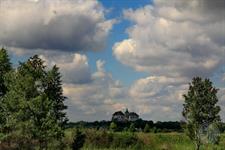 |
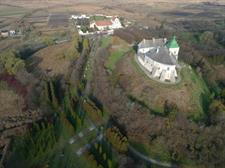 |
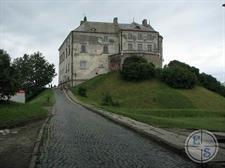 |
| Olesko castle | Photo by skyscrapercity.com | |
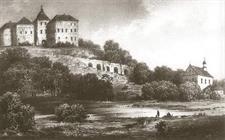 |
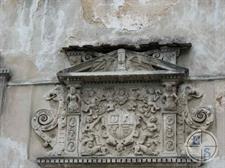 |
 |
| За последние 200 лет замок особо не изменился | ||
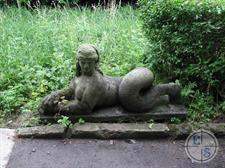 |
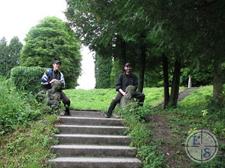 |
|
| At the sight of such a miracle of evolution, any zoologist will shoot himself |
In 1857, 461 Jews (17.7%) lived in Olesko,
in 1880 - 724 (23%),
in 1890 - 773 ( 23.4%),
in 1900 - 770 (22%),
in 1910 - 832 (20.5%),
in 1921 - 636 (17.4%),
in 1931 - approx. 600,
in 1935 - 738 Jews.
The first mention of Jews Olesko dates back to the beginning of the 16th century.
In 1579, during the Tatar raid on Olesko, 38 Jews died.
In 1608 in Olesko there was a synagogue, later in the 17th century another synagogue (wooden) was built.
in 1880 - 724 (23%),
in 1890 - 773 ( 23.4%),
in 1900 - 770 (22%),
in 1910 - 832 (20.5%),
in 1921 - 636 (17.4%),
in 1931 - approx. 600,
in 1935 - 738 Jews.
The first mention of Jews Olesko dates back to the beginning of the 16th century.
In 1579, during the Tatar raid on Olesko, 38 Jews died.
In 1608 in Olesko there was a synagogue, later in the 17th century another synagogue (wooden) was built.
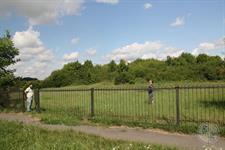 |
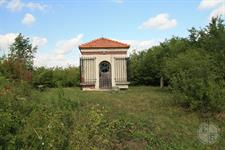 |
 |
| Old Jewish cemetery in Olesko, 2015 | Ohel on the grave of Hanoch Genoch Mayer | |
 |
 |
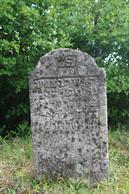 |
| Jews in Olesko, beginning of 20th century | Only 2-3 matsevot remained in the cemetery |
In the 1st half of 18 century rabbi in Olesko was Yakov Shor, in 1748 his brother Moishe became the rabbi, then Nosn-Note Landa.
In the 18th century Congresses of representatives of the Jewish communities of the Russian and Bratslav Voivodeships were held in Olesko.
In 1850 Hanoch-Genoch Mayer (1800–1884) founded in Olesko Hasidic dynasty.
In 1884 his brother Itshok (1829–1904) led the dynasty, then the son-in-law of the last Aron Menajem Mendl Eichenstein (1860–1923).
The modern residence of Olesker Rebe is located in Brooklyn, New York.
In the 1st half of 20th century in Olesko there was also Hasidic court of Hanoch-Genoch Vagshal.
In the 18th century Congresses of representatives of the Jewish communities of the Russian and Bratslav Voivodeships were held in Olesko.
In 1850 Hanoch-Genoch Mayer (1800–1884) founded in Olesko Hasidic dynasty.
In 1884 his brother Itshok (1829–1904) led the dynasty, then the son-in-law of the last Aron Menajem Mendl Eichenstein (1860–1923).
The modern residence of Olesker Rebe is located in Brooklyn, New York.
In the 1st half of 20th century in Olesko there was also Hasidic court of Hanoch-Genoch Vagshal.

- Home
- Shtetls
- Vinnytsia region
- Volyn region
- Dnipro region
- Donetsk region
- Zhytomyr region
- Zakarpattia region
- Zaporizhzhia region
- Ivano-Frankivsk region
- Kyiv region
- Kropyvnytskyi region
- Luhansk region
- Lviv region
- Mykolayiv region
- Odessa region
- Poltava region
- Rivne region
- Sumy region
- Ternopil region
- Kharkiv region
- Kherson region
- Khmelnytskyi region
- Chernihiv region
- Chernivtsi region
- Cherkasy region
- Crimea
- Synagogues
- Cemeteries
- Objects & guides
- Old photos
- History
- Contact
Jewish towns of Ukraine
Jewish towns of Ukraine
My shtetl
My shtetl
Donate
